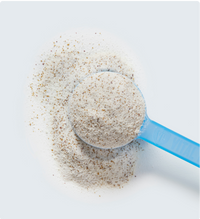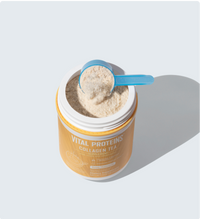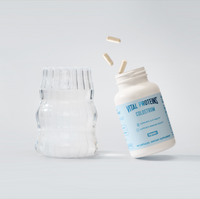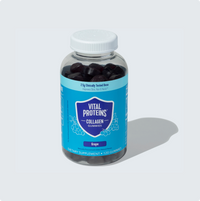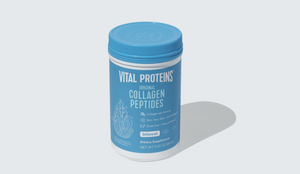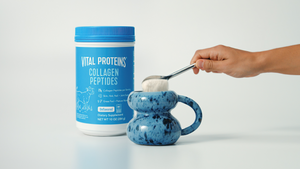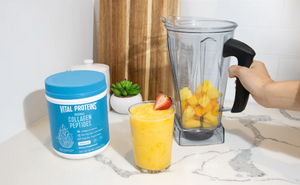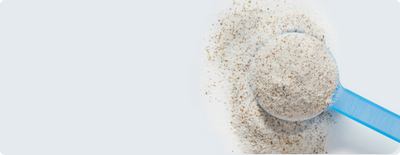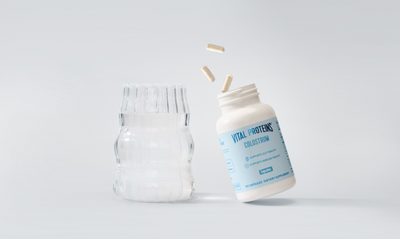At Vital Proteins®, we take our wellness seriously. So, as we work our way through 2020, we thought we’d spotlight some of the most talked-about trends in the industry (outside of collagen, that is!). Come along with us on this health-focused journey. Up first: the keto diet!
You have likely heard of the ketogenic diet – "keto" for short. It’s one of the main topics I’m asked about almost daily as a registered dietitian and there remains a good deal of confusion and misinformation about it.
The high-fat, very low-carb ketogenic diet was originally developed in the 1920s as a treatment for severe epilepsy in infants and children. Fast forward to recent years, and now people are looking to the ketogenic diet as a way to lose weight and as an answer to a myriad of health problems as well. Below, we break this down further so you can understand if it's a fit for you and your lifestyle.
Note: We also recommend discussing your health goals with your licensed healthcare professional. They can best provide you with the diagnosis and treatment of any medical condition and assist you as well in deciding whether a dietary supplement will be a helpful addition to your regimen.

What Is the Keto Diet?
In short, the keto diet is the idea of eating high-fat and very low-carb foods to increase fat burning.
Ketogenesis is the process of making energy from the breakdown of fatty acids and certain amino acids. Normally, our bodies break down carbohydrates into smaller strands, like glucose, fructose and sucrose, and convert them into energy, or ATP, for proper functioning. When the body is deprived of adequate carbohydrates, it alternatively produces energy through ketones, which are the byproducts of the breakdown of fatty acids.
Common food choices in the keto diet include meat, fish, eggs, avocados, non-starchy vegetables, oils, nuts and seeds.

Is the Keto Diet Easy to Follow?
It is important to distinguish that the ketogenic diet is not necessarily synonymous with a low-carb diet. For the body to go into ketogenesis, it typically requires 30g of carbohydrates or less per day, so it is much more extreme and restrictive. This translates to about two slices of bread or a medium banana and one serving of broccoli for the entire day.
However, interpretations of the ketogenic diet vary widely, ranging from a modified Atkins Diet to just a lower carbohydrate diet. Just like other diets, the ketogenic diet may work in the short term, but it is a challenging and restrictive diet to maintain. According to the U.S. News & World Report list of “Easiest Diets to Follow,” the ketogenic diet ranked second-to-last.
We don’t have significant research that has looked at this way of eating over long periods of time so there remains much unknown in terms of health benefits and dangers. However, there are many side effects with the keto diet that are worth considering.
RELATED: Are Collagen Peptides Good for Keto?

What Are The Downsides to Doing the Keto Diet?
Digestive issues, ranging from constipation to diarrhea, are common side effects of the ketogenic diet – especially when first starting out. Most of this is a result of the change in your diet, to high-fat, low-fiber foods. Since fiber is predominantly found in carbohydrate-based foods, a restriction of these foods will naturally decrease your fiber intake and impact digestion. Other consequences include:
Bad Smelling Breath & Urine
You may have heard of people measuring their blood ketone levels through breath analyzers and urine strips. This is because as your ketone levels elevate, your body will try to rid them through urine and breath. This excess of ketones is often described as a “fruity smell.”
RELATED: Paleo vs Keto: Which Is Better for You?
Micro-nutrient Deficiencies
Essential micro-nutrients, like calcium, potassium and magnesium, are often found in carbohydrates, grains and dairy products. By removing many of these foods, supplementation is often necessary. Common supplements include magnesium and electrolytes, calcium, vitamin C and vitamin K, but you should always work with a health professional for personalized recommendations.
Keto Flu
If you’re wondering why you’re feeling tired or sluggish, it may be because your body is being deprived of its quickest source of energy: carbohydrates.
“Keto flu” refers to feelings to fatigue, headaches, nausea and constipation that often come with an abrupt high-fat diet change. You may also experience sleep issues, decreased athletic performance, increased hunger and poor mental function.
Electrolyte Imbalance
One explanation for some of the side effects is that the body is rapidly excreting sodium and fluids as it adapts to a carbohydrate-restricted diet. Adding in sodium and potassium can help normalize electrolyte imbalances and may help ease some of the symptoms.

What Vital Proteins Products Can I Take On the Keto Diet?
When it comes to finding a product that fits a keto lifestyle, Collagen Creamer is a must-have. Vital Proteins’ line of Collagen Creamers – featuring Coconut, Vanilla and Mocha flavors – are made with coconut milk, which means they contain healthy fats (an important component when following the keto diet) in addition to collagen.

